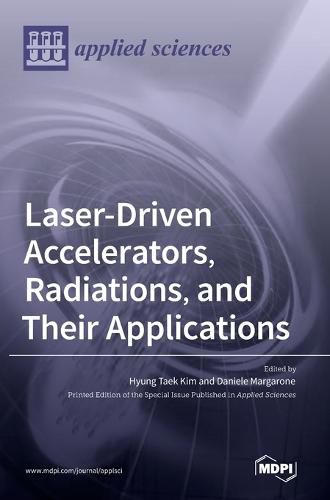Readings Newsletter
Become a Readings Member to make your shopping experience even easier.
Sign in or sign up for free!
You’re not far away from qualifying for FREE standard shipping within Australia
You’ve qualified for FREE standard shipping within Australia
The cart is loading…






This title is printed to order. This book may have been self-published. If so, we cannot guarantee the quality of the content. In the main most books will have gone through the editing process however some may not. We therefore suggest that you be aware of this before ordering this book. If in doubt check either the author or publisher’s details as we are unable to accept any returns unless they are faulty. Please contact us if you have any questions.
Particle accelerators and radiation based on radio-frequency (RF) cavities have significantly contributed to the advancement of science and technology in the most recent century. However, the rising costs and scales for building cutting-edge accelerators act as barriers to accessing these particle and radiation sources. Since the introduction of chirped pulse amplification technology in the 1990s, short-pulse, high-power lasers have enabled the realization of laser-driven accelerations and radiation sources. Laser-driven accelerators and radiation sources could be a viable alternative to providing compact and cost-effective particle and photon sources. An accelerating field in a plasma, driven by intense laser pulses, is typically several orders of magnitude greater than that of RF accelerators, while controlling the plasma media and intense laser pulses is highly demanding. Therefore, numerous efforts have been directed toward developing laser-driven high-quality particle beams and radiation sources with the goal of paving the way for these novel sources to be used in a variety of applications. This Special Issue covers the latest developments in laser-based ion and electron accelerators; laser-plasma radiation sources; advanced targetry and diagnostic systems for laser-driven particle accelerators; particle beam transport solutions for multidisciplinary applications; ionizing radiation dose map determination; and new approaches to laser-plasma nuclear fusion using high-intensity, short laser pulses.
$9.00 standard shipping within Australia
FREE standard shipping within Australia for orders over $100.00
Express & International shipping calculated at checkout
This title is printed to order. This book may have been self-published. If so, we cannot guarantee the quality of the content. In the main most books will have gone through the editing process however some may not. We therefore suggest that you be aware of this before ordering this book. If in doubt check either the author or publisher’s details as we are unable to accept any returns unless they are faulty. Please contact us if you have any questions.
Particle accelerators and radiation based on radio-frequency (RF) cavities have significantly contributed to the advancement of science and technology in the most recent century. However, the rising costs and scales for building cutting-edge accelerators act as barriers to accessing these particle and radiation sources. Since the introduction of chirped pulse amplification technology in the 1990s, short-pulse, high-power lasers have enabled the realization of laser-driven accelerations and radiation sources. Laser-driven accelerators and radiation sources could be a viable alternative to providing compact and cost-effective particle and photon sources. An accelerating field in a plasma, driven by intense laser pulses, is typically several orders of magnitude greater than that of RF accelerators, while controlling the plasma media and intense laser pulses is highly demanding. Therefore, numerous efforts have been directed toward developing laser-driven high-quality particle beams and radiation sources with the goal of paving the way for these novel sources to be used in a variety of applications. This Special Issue covers the latest developments in laser-based ion and electron accelerators; laser-plasma radiation sources; advanced targetry and diagnostic systems for laser-driven particle accelerators; particle beam transport solutions for multidisciplinary applications; ionizing radiation dose map determination; and new approaches to laser-plasma nuclear fusion using high-intensity, short laser pulses.